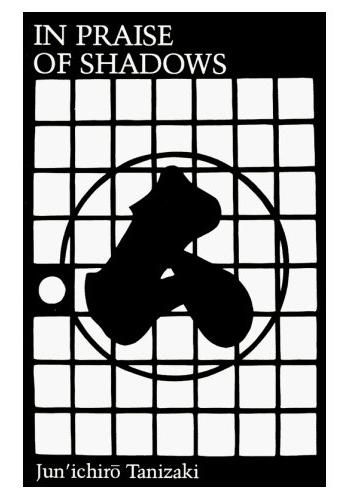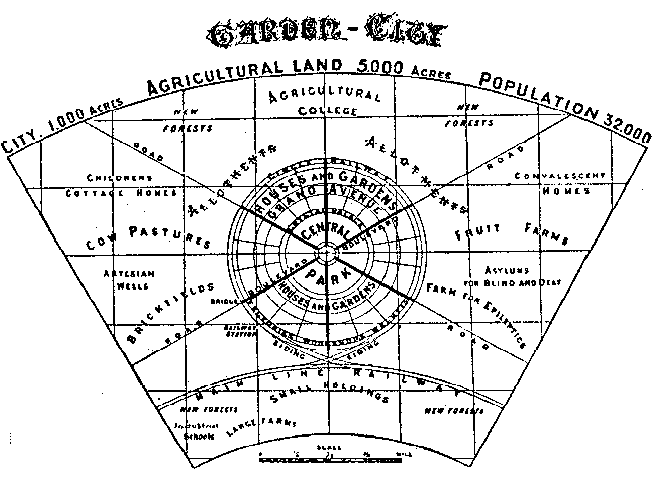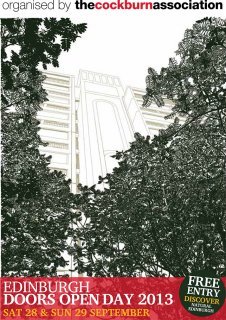Yasmin Ali
Urbanism // Design
Doors Open Day Edinburgh, Talk: 'Footfall' by Malcolm Fraser@RCAHMS, 1-2pm Monday 23.09.13
September 23rd, 2013Edinburgh architect Malcolm Fraser presented a talk at two scales: firstly, his work with the National Review of Town Centres in Scotland, which seeks to recommend general strategies for to improve the vibrancy and viability of Scottish Town Centres as places of economic growth and interest. Secondly, he presented a series of projects from his own practice which mediate sensible use of space and siting and reflect aspects of the thinking behind the report's principles in general, where appropriate.
The title 'Footfall' neatly summarises both the commercial aspirations of inner-city developers (particular retailers), and the human-scale consideration of Fraser's work. Stand-out projects included a mixed-use development in Stromness which mimicks the traditional urban form of enclosed courtyards to mask the effect of the wind, and a scheme for Lews Castle & Museum, currently on site, which breaks boundaries with its innovative use of displays and the landscape.
Fraser also provides a whistle-stop tour in slides of some of his best known arts buildings throughout Edinburgh, including the National Poetry Library, National Storytelling Centre and Dovecot Studios, all of which worked against some unworkable existing arts strategies. A new building to check out this Doors' Weekend is surely his recently completed Edinburgh Centre for Carbon Innovation (ECCI), which fittingly, is the first ever development of its kind to achieve an “outstanding” rating from BREEAM, the world’s leading sustainability rating system for the built environment.
The talk was the first in a series of lunchtime talks held at The Royal Commission on the Ancient and Historical Monuments of Scotland (RCAHMS) for this year's Doors Open Day, which in Edinburgh's case has extended to a week of lively talks, walks and the obligatory weekend of exclusive building visits.
Five alternative short reads
February 5th, 2013Leave Miller's Construction Series and neuferts'
at the office and cast an eye over some short books
and novellas which may be of interest...
I neglected to write 'Top' as a prefix to the headline,
because, well, tastes vary, and who am I to say what's best to read?
Good reads I would recommend, however, include the following curated list:

Original cover designed by Yukio Futugawa
5. If you're searching for a design for life, try the Philosophy book 'In Praise of Shadows', by (Philosopher) Jun'ichiro Tanizaki, first published 1933
Considered a modern classic, Tanizaki's essay speaks eloquently through an aesthete's lens which varies its focus on subjects as diverse as food, interiors, the precious mineral jade, pottery and even toilets. In particular, its passages on the ceremonial art of drinking tea, and the lights and darks of the laquerware have some poetic resonance. At a lean 80-pages, it's slimmer than some design blogs, but there's imagery in every line. Worth a read.

4. If you want to know more about Britain's capital with a book you can take on the tube, try the London essay 'London: Bread and Circuses', by (Journalist) Jonathan Glancey, 2001
Glancey, well-known as the Architectural and Design correspondent of the Guardian, has gifted us with a very concise history of London, which references urban policy throughout. An illuminating read, at under 150pages, including many black and white photos, it's an excellent record of the specific and special issues which shaped-and continue to shape-the history of this modern metropolis. Glancey's polemic makes a convincing case that flagship projects around London are privatised 'circuses', setting up the discourse for an interesting read.
The Urban Transect - from Urban to Rural
November 8th, 2011
The Urban Transect is a concept in Urban Design which can be applied at varying
scales. This scalar versatility is where its success stems from.
The Urban Transect / Andres Duany DPZ
This is a theory pioneered by New Urbanists. New Urbanists are those who further placemaking based on walkable neighbourhoods and sustainable placemaking.
From a recent book, by Andres Duany and DPZ, published by The Prince's Foundation, entitled 'Theory and Practice of Agrarian Urbanism', this appears to draw links with the Garden Cities Movement, as pioneered by Ebenezer Howard in the fifties.

Image: Ebenezer Howard
The key to its application lies with density. This movement started in Northern America where land is plentiful and development is unabashedly car-centric. Through pages of delicate illustrations this book, the Garden City concept is translated to a distinctly urban scale.



